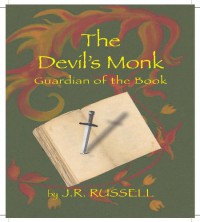Medicine, politics and history in England around the time of King Alfred

The Devil’s Monk is set in the turbulent days after the reign of Alfred. The background, then, is a time of enormous transition for Britain. There was political and military struggle, as Angles, Saxons, and Danes contended for mastery of the land and the older British tribes were squeezed out. There was religious change, as Christianity gradually lured people away from the older gods. And, at least for the central character of this book, Bald, there is personal transformation, as he decides over a period of years what he can contend with and what must simply be accepted.
Bald, through whom we witness the events and people of the age, is a herbalist. He is known to the modern age through the pages of an old medical text, The Leechbook of Bald, now in the British LIbrary. Jack has done a good job of filling in a hypothetical biography for Bald. It is never altogether clear whether Bald’s medical successes are due to the remedies he prepares, or the result of sympathetic attention to the real causes of malaise. Even today, cures and healings sometimes defy explanation, and Bald’s world view is well suited to his role, being deeply rooted in the old ways, with a weak grasp of the healing role of Christ as sufferer overlaid on top.
On a storytelling level, it took me a while to settle in to this book, since the first part seemed rather disjointed. As the dichotomy of Bald’s simultaneous power and impotence came to the fore, the tale held me more. Secondary characters also get more development in the later stages. It is not a fast paced book, but the subject matter does not require it to be, and the story is better suited to the slow unravelling of hearts, lives, and nations that we find in the pages. There are frequent citations from the herbal manual woven into the plot, together with a few extracts from the poetry of the age; these add to the atmosphere, though the translation used from the Old English is sometimes heavy going.
Overall for me this was a four star book. I enjoyed reading about the history of places which I know in contemporary England – Eashing, Winchester, London, York and Glastonbury among others. The historical research which has gone into the book seems solid. However, it was a book which interested me intellectually rather than engaged me emotionally. I would have enjoyed it more if the emotional dimension had been more accessible.


